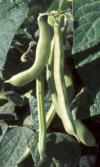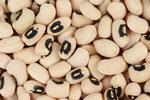PRIMARY CONTACTS

UCCE Farm Advisor
(209) 953-6120
mmleinfeldermiles@ucanr.edu

UCCE Farm Advisor
Field Crops, Pest Management
(530) 666-8734
rflong@ucanr.edu

Assistant CE AdvisorAdvisor
Agronomic Cropping Systems
(559) 852-2744
neclark@ucanr.edu
California Dry Bean Advisory Board provides funding for much of the research reported on this site. We appreciate their continued support.

General Bean Information
Limas, Common Beans, Garbanzos (chickpeas), and Cowpeas (blackeye beans)

California farmers grow four main classes of dry beans, including limas (large and baby), common beans (such as kidneys, pinks, whites, cranberries and blacks), garbanzos (chickpeas), and cowpeas (blackeye beans). Garbanzo beans are grown as a winter crop, while the others are produced in the summer.



(2011, by Rachael Long, UC Cooperative Extension Advisor)

